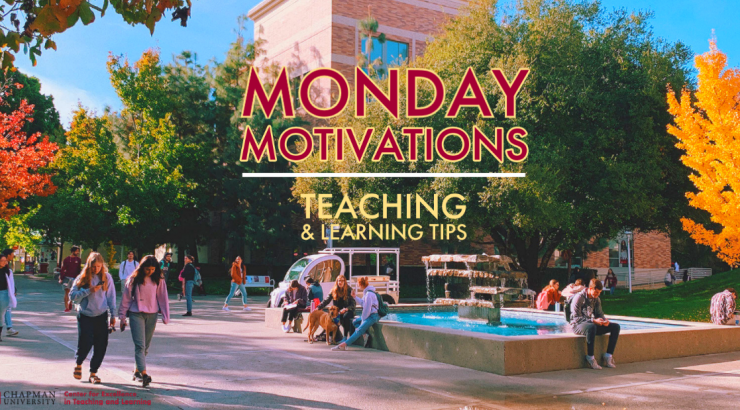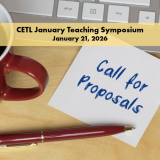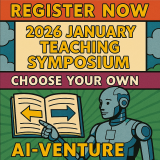
Teaching Tips for the Week of September 18, 2023
September 14, 2023
The Power of Prediction: Activating Prior Knowledge to Boost Learning
In a traditional course structure, we deliver information through readings, lectures, and other instructional activities. Students are then asked to practice the skills or application of information we’ve provided by answering questions or solving problems. What would happen if we asked students to answer these questions first? Although the idea may run counter to traditional ideas about teaching, the research on learning indicates that “asking students to use their existing knowledge and skills to struggle with the material before we teach it can provide a robust foundation for deeper learning” (Lang, 2021, p. 20).
In his book, Small Teaching, James Lang (2021) cites several studies that found that students who were given the opportunity to participate in predictive activities, even though their predictions were often incorrect, performed about 10% better on later exams covering that material than those who did not engage in predictive tasks. He notes that an essential piece of this improved performance is following a predictive activity with instruction so that students get immediate feedback about their predictions.
“Neuroscientists are increasingly demonstrating that our brains are prediction-making machines, and that our learning stems most fundamentally from the cycle of making predictions and then adjusting our thinking in light of the accuracy of those predictions” (Lang, 2021, p. 25).
Using predictive activities at the start of a class or lesson helps students identify gaps in their knowledge and skills, or errors or misconceptions in their thinking. The course materials should then provide students with what they need to fill those gaps (Lang, 2021). Answering questions or taking a practice test about a topic they have not yet learned in your course can help students gain an understanding of what they need to study and learn. It also alerts them to an instructor’s methods for assessing student learning (e.g., rote learning vs application of concepts) and the essential course content they need to learn (Lang, 2021).
Lang (2021) suggests the following strategies for activating prior knowledge:
- Before introducing new content, have students take a brief pre-quiz or write responses to a few questions about a topic, then summarize those results in class.
- At the start of a class, ask students to write down 3-5 things they think they know about the topic for the class session, based on previous classes or experiences, then work in pairs to compare notes. Ask a few students to share their responses and build on them as you introduce the new material.
- Dedicate some time at the start of a term to assessing students’ current knowledge about the subject, using a written pre-test or discussion activity (whole-class or small group). Use this information to formulate a plan for building upon their knowledge in the course.
Prediction activities don’t have to be lengthy or complicated. Lang suggests that they: 1) focus on broad conceptual material, 2) induce student reflection on the subject, and 3) are followed by immediate feedback to ensure predictions are confirmed or corrected quickly (2021). Here are some additional predictive learning activities you can try:
- Start a class with a brainstorming activity in which students work individually or in small groups to explore their prior knowledge, then work as a class to organize that knowledge to support what they will learn moving forward in the course.
- At the start of a module, lesson, or class, have students take a brief pre-test on the material that will be covered.
- Use polls throughout a lecture to ask students to answer questions about the topic that you will cover next, followed by discussion about their responses and then your explanation.
- Ask students to predict the outcome of a case, problem, or example before you get to the conclusion. After a discussion, ask students to reflect on why their predictions were wrong or right (“pause, predict, ponder”).
- End a class or lesson by asking students to make predictions related to the topic(s) that will be covered in the next lesson.
We encourage you to try some of these predictive activities to see if they help improve your students’ learning and achievement of outcomes.
Source: Lang, J. (2021). Small Teaching: Everyday Lessons from the Science of Teaching (2nd ed.). Jossey-Bass.
Interested in exploring any of these ideas further or discussing how you might implement them in your own teaching practices? Is there a tip you’ve tried that you would like to share with colleagues? Contact CETL or schedule a consultation to continue the conversation.


